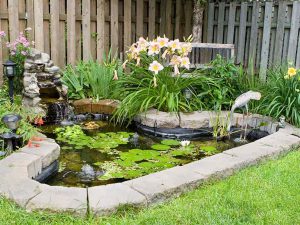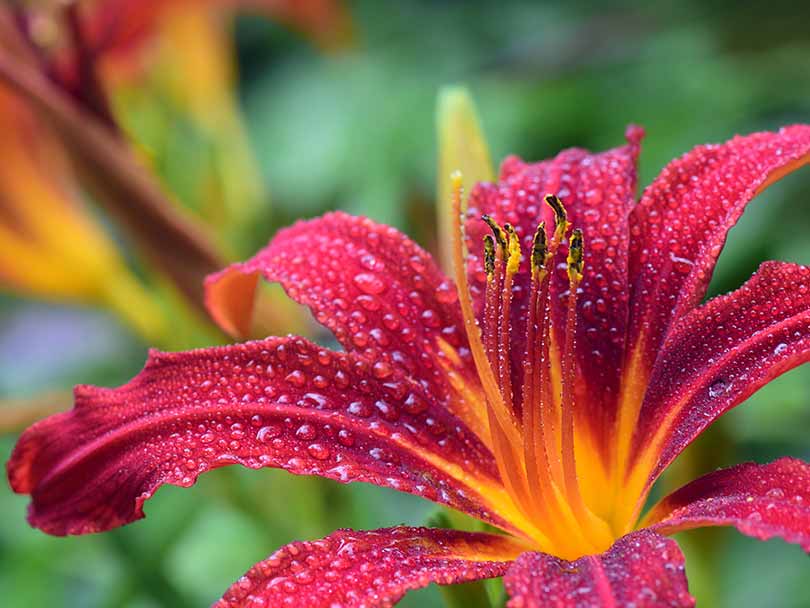By Vicki Spencer, Master Gardener
Every Easter our church was adorned with hundreds of lilies and, every once in a while, their subtle fragrance would float gently through the air. It created an indelible memory and an enduring love of lilies.

Lilies are a great option for variety in perennial gardens to add a splash of color.
Lilies, with their grand blossoms, add elegance to indoor bouquets and outdoor gardens alike. I used to think when I received a lily plant that I would have to wait until fall to plant it outdoors. This was because we typically plant bulbs in the autumn so they can establish roots before spring. But container lilies, which have roots, can be planted anytime during early summer. Since they are a perennial, they will continue to bloom year after year with the proper care.
When purchasing lily bulbs, the Farmers’ Almanac advises planting them soon afterward. This is because they tend to deteriorate over time. If you live in an area with harsh winters, it’s best to order and plant the bulbs in the spring after the threat of frost has passed.
Lilies typically bloom from late spring to fall, depending on the type and where you live. By carefully blending early, mid-season and late varieties in your garden, you will enjoy magnificent blooms for months.
Asiatic lilies are the first to bloom in May or June and their blossoms last about five weeks. They come in many colors and usually stand 2 to 3 feet tall with upward-facing flowers. Although not fragrant, they are easy to care for and make perfect cutting flowers. While there are many varieties to choose from, you might try Yellow Carpet Border Lily™ or the new Regent’s Park Asiatic Lily from Breck’s® for a brilliant splash of color. Other popular Asiatic varieties include the brilliant orange Brunello, tricolored Starlette, dark-red Black Out and maroon Dimension.

You can plant lilies practically anywhere you choose, since their tall stems with narrow lance-shaped leaves take little space.
As Asiatics begin to fade around August, Orientals burst onto the scene. They grow much larger at 3 to 6 feet and are incredibly fragrant. This spring, Burpee® is offering Garden Party, whose flowers provide a “carnival of color” in deep yellow and red.
Other Orientals include Josephine with deep pink petals and the white Stargazer hybrid typically found in floral bouquets. Orientals prefer lots of sunshine and cannot tolerate soggy soil, which makes them perfect for Colorado’s drier climate. Other lily types include trumpet lilies and tiger lilies. Trumpet lilies tend to have smaller flowers than other lilies but produce a nice scent. Tiger lilies provide a brilliant display admired by all but can spread out of control if not managed. They can grow above 5 feet tall, so it’s best to plant them toward the back of your garden.
You can insert lilies into almost any area since their tall, erect stems with narrow, lance-shaped leaves take little space. They provide variety to perennial gardens, add a splash of color in front of bushes or brighten patios with container arrangements. Since they are easy to grow, you can enjoy them almost anywhere as long as there is ample sunlight and drainage.
Gardener Vicki Spencer has an eclectic background in conservation, water, natural resources and more.

